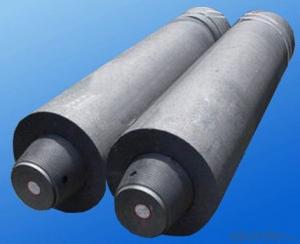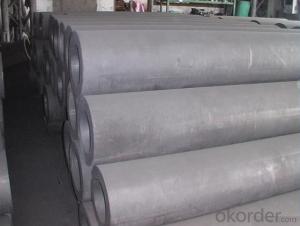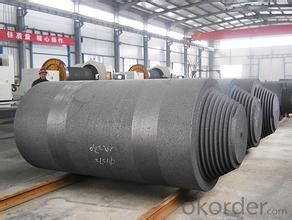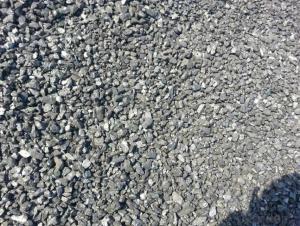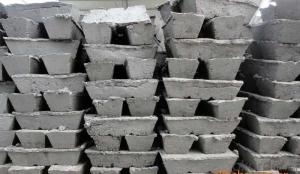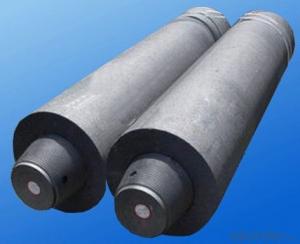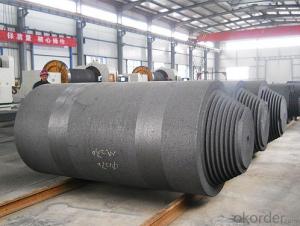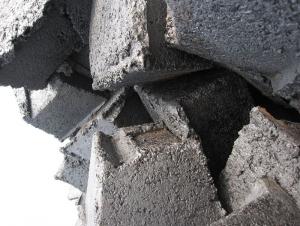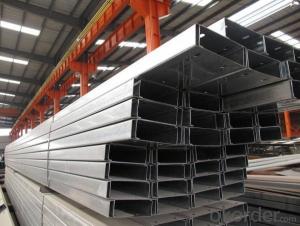Carbon Electrodes with Stable Quality from China
- Loading Port:
- Lianyungang
- Payment Terms:
- TT OR LC
- Min Order Qty:
- 20 m.t.
- Supply Capability:
- 700 m.t./month
OKorder Service Pledge
OKorder Financial Service
You Might Also Like
Carbon Electrodes with Stable Quality from China
Spcifications
1:carbon eletrode
2:for ferroalloy,calcium carbide, silicon metal, manufacture
Graphite/Carbon Electrode Paste Specification:
| PARAMETER UNIT GUARANTEE VALUE | ||||||
| Items | Φ500~Φ700 | Φ750~Φ960 | Φ1020~Φ1400 | |||
| Rs μΩ.m | ≤45 | ≤38 | ≤45 | ≤38 | ≤40 | |
| Bulk Desity g/cm3 | ≥1.55 | ≥1.58 | ≥1.55 | ≥1.58 | ≥1.55 | ≥1.58 |
| Bending Strength MPa | 3.5~7.5 | 4.0~7.5 | 3.5~7.5 | 4.0~7.5 | 3.5~7.5 | 4.0~7.5 |
| Compressive Strength MPa | ≥20.0 | ≥20.0 | ≥20.0 | ≥20.0 | ≥19.0 | ≥19.0 |
| Compressive Strength MPa | 3.2~4.8 | 3.0~4.6 | 3.2~4.8 | 3.0~4.6 | 3.2~4.8 | 3.0~4.6 |
| Ash % | ≤2.5 | ≤2.0 | ≤2.5 | ≤2.0 | ≤2.5 | ≤2.0 |
Picture:
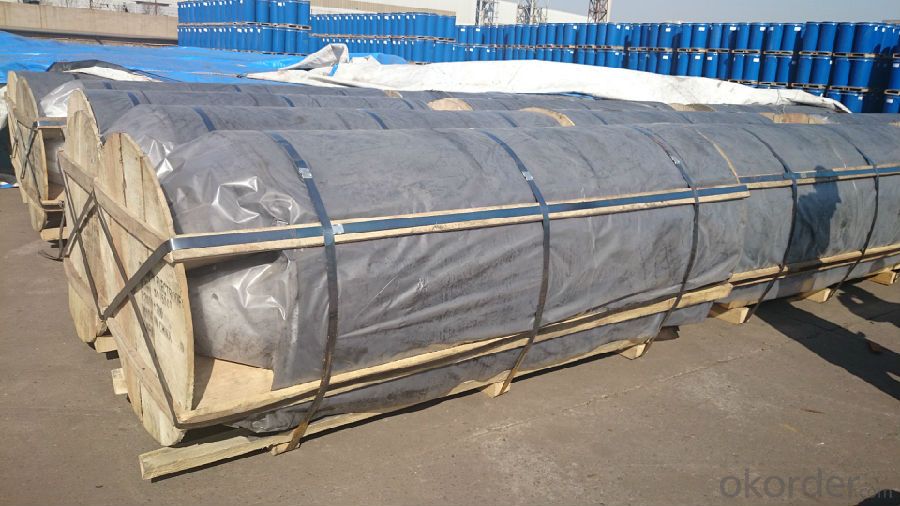
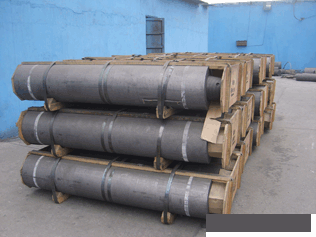
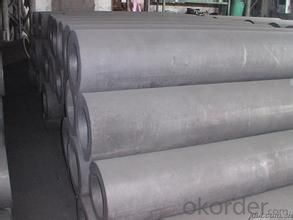

Service:
We can adjust the size based on different enquiry. please contact us if you are interested in this materials, we will send our offer as soon as get your kind email.
Note:
The consumption of Electric Arc Furnace(EAF) is about 3-5kg per ton steel. The Ladle Furnace(LF) is about 1kg per ton steel. The converter with Ladle Furnace(LF) is about 0.5kg per ton steel. All the information is for your reference. There are many factors can influence the consumption, such as the kinds of steel, conduction time, process production and so on. So if you have any question, please don’t hesitate to contact us.
- Q: Which is better, 13 and 14 carbon breath tests?
- The following is the range of feesC14- carbon 14 breath test, each province Price Bureau regulations are different, 95-120 yuanC13- carbon 13 breath test, 150-220 yuan
- Q: What is carbon neutral certification?
- The process of carbon neutral certification involves evaluating and verifying organizations, products, or services to ensure they have a carbon footprint that equals zero. This requires taking significant measures to reduce greenhouse gas emissions and offsetting any remaining emissions through the purchase of carbon credits or investments in projects that remove carbon dioxide from the atmosphere. To achieve carbon neutrality, entities undergo a thorough assessment that measures their carbon emissions, sets reduction targets, implements initiatives to reduce their carbon footprint, and tracks progress. After reducing emissions as much as possible, any remaining emissions are offset by investing in verified projects such as reforestation, renewable energy, or energy efficiency projects that reduce greenhouse gases. Certification is conducted by an independent third-party organization to evaluate and verify carbon neutrality claims, ensuring transparency and credibility. Once certified, organizations or products can display the carbon neutral label to demonstrate their commitment to environmental sustainability and responsible carbon management. Carbon neutral certification is crucial as it offers a standardized and recognized method for organizations and products to showcase their dedication to combating climate change. It enables consumers and stakeholders to make informed choices by supporting entities that have taken concrete steps to reduce their carbon emissions and contribute to a more sustainable future. Moreover, carbon neutral certification encourages organizations to adopt sustainable practices and invest in environmentally positive projects, thus hastening the transition to a low-carbon economy.
- Q: How does carbon affect the stability of ecosystems?
- Carbon plays a crucial role in the stability of ecosystems. It is a fundamental element that is essential for all living organisms. Carbon is present in the atmosphere, in the form of carbon dioxide (CO2), and is absorbed by plants during photosynthesis. This process allows plants to convert sunlight, water, and carbon dioxide into glucose, which is then used as energy for growth and development. The stability of ecosystems heavily relies on the balance of carbon in the environment. Carbon acts as a building block for organic matter and is stored in various forms such as plants, animals, soil, and the atmosphere. This storage of carbon helps to regulate the carbon cycle, which is crucial for maintaining a stable climate. One of the main ways carbon affects the stability of ecosystems is through its role in climate regulation. Carbon dioxide is a greenhouse gas, meaning it traps heat in the atmosphere and contributes to global warming. Excessive carbon emissions from human activities, such as burning fossil fuels, deforestation, and land-use changes, have led to an increase in carbon concentration in the atmosphere. This results in the enhanced greenhouse effect, leading to rising temperatures and climate change. Climate change has far-reaching consequences for ecosystems. It can disrupt the delicate balance of ecosystems by causing shifts in temperature and precipitation patterns, altering habitats, and affecting the timing of seasonal events. These changes can lead to the loss of biodiversity, as certain species may struggle to adapt to the new conditions. Additionally, climate change can also impact the availability of resources, such as water and food, which are essential for the functioning and stability of ecosystems. Furthermore, the excessive release of carbon into the atmosphere can also have direct negative effects on ecosystems. Acid rain, caused by high levels of carbon emissions, can lead to the acidification of water bodies, making them unsuitable for aquatic life. Increased carbon dioxide levels in the oceans can also lead to ocean acidification, which harms marine organisms like corals and shellfish. On the other hand, carbon is also essential for the health and productivity of ecosystems. Carbon-rich organic matter in the soil helps to retain nutrients, improve soil structure, and enhance water-holding capacity. This enables plants to grow better and supports the overall functioning of ecosystems. In conclusion, carbon has a profound impact on the stability of ecosystems. While it is necessary for the growth and development of living organisms, excessive carbon emissions and climate change pose significant threats to the balance and functioning of ecosystems. It is crucial to reduce carbon emissions, promote sustainable practices, and protect carbon sinks like forests and wetlands to ensure the long-term stability of ecosystems.
- Q: How does deforestation contribute to carbon dioxide levels in the atmosphere?
- Increased carbon dioxide levels in the atmosphere are significantly influenced by deforestation. Trees play a crucial role as natural carbon sinks, absorbing carbon dioxide through photosynthesis and storing it in their trunks, branches, and leaves. However, when forests are cleared or burned down for purposes like agriculture, logging, or urbanization, the stored carbon is released back into the atmosphere as carbon dioxide. The removal of trees directly diminishes the planet's ability to absorb carbon dioxide, resulting in an imbalance in the carbon cycle. Furthermore, deforestation disrupts the carbon cycle by hindering the process of photosynthesis, which is vital for converting carbon dioxide into oxygen and organic compounds. Additionally, deforestation indirectly contributes to increased carbon dioxide levels in the atmosphere through the decomposition of organic matter. When trees are cut down or burned, the stored carbon they contain is released as carbon dioxide, intensifying greenhouse gas emissions. Moreover, deforestation impacts the water cycle, leading to dryer conditions in affected areas. This causes soil to become arid, making it less suitable for plant growth and reducing the potential for carbon absorption through reforestation efforts. The cumulative effect of deforestation on carbon dioxide levels is significant. Studies indicate that deforestation accounts for approximately 10-15% of global carbon emissions, thus making it one of the leading contributors to climate change. The rise in atmospheric carbon dioxide levels, along with other greenhouse gases, contributes to the greenhouse effect, trapping heat in the atmosphere and causing global warming. To mitigate climate change and decrease carbon dioxide levels, it is crucial to address deforestation. Implementing sustainable forestry practices, promoting reforestation efforts, and protecting existing forests are essential steps in preserving carbon sinks and reducing greenhouse gas emissions.
- Q: What are the effects of carbon emissions on the stability of mangrove forests?
- The stability of mangrove forests is significantly impacted by carbon emissions. These ecosystems are highly vulnerable to climate changes, and increased carbon emissions contribute directly to global warming and climate change. One of the main consequences of carbon emissions on mangrove forests is the rise in sea levels. When carbon dioxide is released into the atmosphere, it traps heat and warms the planet. This, in turn, causes the melting of polar ice caps and glaciers, resulting in higher sea levels. The increased sea levels pose a threat to mangroves as they are adapted to grow in areas where they are exposed to both saltwater and freshwater. With rising sea levels, mangroves may experience more flooding, which can lead to their submersion and eventual death. Additionally, carbon emissions also play a role in ocean acidification. When carbon dioxide dissolves in seawater, it creates carbonic acid, which alters the pH balance of the ocean. Mangroves rely on the ocean for their nutrients and reproductive processes. Ocean acidification can hinder the availability of vital nutrients like nitrogen and phosphorus, necessary for the growth and survival of mangroves. Furthermore, the acidification of seawater can negatively impact the reproduction and development of mangrove species, leading to a decline in their population. Furthermore, carbon emissions contribute to changes in weather patterns, including an increase in the frequency and intensity of storms and hurricanes. Mangroves serve as natural barriers that protect coastal areas from the destructive impacts of these extreme weather events. However, with intensified storms and hurricanes, the stability of mangrove forests is compromised. Strong winds, heavy rainfall, and storm surges can uproot or damage mangrove trees, disrupting their structure and reducing their ability to provide coastal protection. Finally, carbon emissions also contribute to the overall warming of the planet, which can result in changes in precipitation patterns. Mangroves rely on a delicate balance of freshwater and saltwater for their survival. Alterations in precipitation patterns, such as prolonged droughts or increased rainfall, can disrupt this balance and have negative effects on mangroves. Droughts can cause water scarcity, stressing mangroves and making them more susceptible to diseases and pests. Conversely, excessive rainfall can dilute the salinity of mangrove habitats, affecting their growth and reproduction. In conclusion, carbon emissions have harmful effects on the stability of mangrove forests. Rising sea levels, ocean acidification, changes in weather patterns, and alterations in precipitation patterns all contribute to the degradation and loss of mangrove ecosystems. It is crucial to reduce carbon emissions and mitigate the effects of climate change to ensure the long-term survival and stability of mangrove forests.
- Q: What are the long-term effects of increased carbon emissions on ecosystems?
- Ecosystems are significantly impacted by the increase in carbon emissions, with climate change being one of the most notable consequences. Carbon dioxide, a greenhouse gas, traps heat in the atmosphere and leads to rising temperatures, changes in weather patterns, and more frequent and intense extreme weather events like hurricanes, droughts, and wildfires. These climate changes have numerous negative effects on ecosystems. For example, the rising temperatures directly affect the behavior and physiology of plants and animals. Many species have specific temperature requirements for their survival, feeding, and reproduction. Even slight changes in temperature can disrupt their life cycles, causing population declines or even extinctions. Moreover, the increase in carbon emissions contributes to ocean acidification. This process occurs when excess carbon dioxide in the atmosphere dissolves in seawater, forming carbonic acid. The acidification has devastating consequences for marine ecosystems, especially for coral reefs and shell-forming organisms such as oysters and clams. It weakens their structures made of calcium carbonate and hinders their growth and reproduction, ultimately leading to their decline. Furthermore, carbon emissions influence the distribution and composition of plant communities. Carbon dioxide is essential for photosynthesis, and elevated levels can enhance plant growth and productivity. However, this can also result in changes in plant composition and the competitive balance between species, favoring certain fast-growing species at the expense of others. This disruption can impact the intricate relationships between plants, pollinators, herbivores, and other organisms, affecting the entire food web. Additionally, increased carbon emissions contribute to the loss of biodiversity. Many species are highly specialized and adapted to specific environmental conditions. As habitats change due to climate change, some species may struggle to adapt or find suitable alternatives, leading to declines or local extinctions. This loss of biodiversity can have cascading effects throughout ecosystems, disrupting ecological processes and reducing the resilience and stability of entire ecosystems. In conclusion, the increase in carbon emissions has far-reaching and harmful long-term effects on ecosystems. It causes climate change, ocean acidification, alters plant communities, and drives biodiversity loss. It is crucial to reduce carbon emissions and mitigate climate change in order to protect and preserve the health and functioning of ecosystems for future generations.
- Q: How does carbon affect the properties of steel?
- Carbon is a crucial element in the production of steel and plays a significant role in determining its properties. The amount of carbon present in steel has a direct impact on its hardness, strength, and overall performance. By adding carbon to iron, the base metal of steel, it becomes significantly stronger and more durable. This is because the carbon atoms are able to occupy the spaces between iron atoms, preventing the metal from sliding or deforming easily. The higher the carbon content, the harder and stronger the steel becomes. Moreover, carbon also influences the steel's ability to be heat treated and its response to various manufacturing processes. When steel is heated and rapidly cooled, a process known as quenching, the presence of carbon allows for the formation of harder and more brittle structures, such as martensite. On the other hand, lower carbon content allows for the formation of softer and more ductile structures. In addition to its impact on strength and hardness, carbon also affects the steel's corrosion resistance. Higher carbon content can lead to reduced corrosion resistance, making the steel more susceptible to rust and other forms of degradation. This is why stainless steel, which contains a higher amount of chromium and low carbon content, is often chosen for applications where corrosion resistance is crucial. To summarize, carbon greatly influences the properties of steel. It enhances its strength and hardness, allows for heat treatment and response to manufacturing processes, and affects its corrosion resistance. The careful control of carbon content in steel is vital in order to achieve the desired properties for specific applications.
- Q: Is carbon monoxide good for people?
- But in organ transplant operations, the use of trace amounts of carbon monoxide helps dilate blood vessels and reduce inflammation, thereby increasing the survival rate of transplanted organs. But traditional carbon monoxide inhalation has the risk of poisoning patients and medical staff by accidental inhalation of high doses of carbon monoxide. That's the advantage of CO
- Q: How is carbon dioxide released into the atmosphere?
- Carbon dioxide is emitted into the atmosphere due to a range of natural and human activities. The burning of fossil fuels, like coal, oil, and natural gas, for energy generation is one of the main sources of carbon dioxide. Combustion of these fuels releases carbon dioxide as a byproduct, which occurs in power plants, factories, and vehicles that rely on fossil fuels for energy. Deforestation and changes in land use also contribute to the release of carbon dioxide into the atmosphere. Through photosynthesis, trees absorb carbon dioxide, and when they are cut down or burned, the stored carbon is released back into the atmosphere. This is especially significant in tropical rainforests, which store large amounts of carbon in their vegetation. Furthermore, natural processes like respiration and volcanic eruptions release carbon dioxide into the atmosphere. In respiration, living organisms, including humans and animals, take in oxygen and exhale carbon dioxide as a waste product. Volcanic eruptions release carbon dioxide that was stored in magma and rock formations. In general, the release of carbon dioxide into the atmosphere is a combination of natural and human activities. However, human activities, particularly the burning of fossil fuels and deforestation, have significantly raised the levels of carbon dioxide in the atmosphere, resulting in the greenhouse effect and climate change.
- Q: What are the main sources of carbon on Earth?
- The main sources of carbon on Earth are both natural and anthropogenic (caused by human activity). In terms of natural sources, carbon is present in the Earth's atmosphere in the form of carbon dioxide (CO2), which is released through natural processes such as volcanic eruptions, respiration by plants and animals, and the decay of organic matter. Carbon is also found in the Earth's lithosphere in the form of carbonate rocks, such as limestone and dolomite, which are formed from the shells and skeletons of marine organisms. Anthropogenic sources of carbon are primarily associated with the burning of fossil fuels, such as coal, oil, and natural gas, for energy production and transportation. When these fossil fuels are burned, carbon dioxide is released into the atmosphere, contributing to the greenhouse effect and climate change. Deforestation and land-use changes also release carbon stored in trees and vegetation into the atmosphere. Additionally, human activities like industrial processes, cement production, and waste management contribute to the emission of carbon dioxide and other greenhouse gases. These activities release carbon that has been locked away for millions of years, significantly altering the natural carbon cycle. Overall, while carbon is naturally present on Earth, human activities have significantly increased its release into the atmosphere, leading to concerns about climate change and the need for sustainable practices to reduce carbon emissions.
Send your message to us
Carbon Electrodes with Stable Quality from China
- Loading Port:
- Lianyungang
- Payment Terms:
- TT OR LC
- Min Order Qty:
- 20 m.t.
- Supply Capability:
- 700 m.t./month
OKorder Service Pledge
OKorder Financial Service
Similar products
Hot products
Hot Searches
Related keywords
